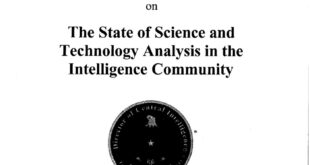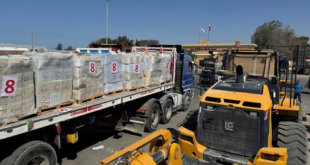The benefits and losses among Russian enterprises are distributed extremely unevenly, the beginning of 2025 showed. Not only did the overall “pie” of profits become smaller, and it was divided differently – banks and some industries receiving military orders, but many other sectors lost. Trade has fallen significantly (the Russians began to spend less), bankruptcy threatens many construction companies, their employees write petitions to Putin, and coal mining in such a deep decline that you should not be surprised if the miners who were left without salaries again cling to the helmets at the White House, as in the 90’s. In some areas (for example, in Tverskaya) wage arrears increased sharply. For the fourth year of the war, even the proximity of companies to the state does not guarantee financial stability.
“Peace to huts, war to palaces,” was once proclaimed by red radicals. “Peace to banks, war for shops” could sound the motto of the Putin economic team in 2025. Perhaps this was not a deliberate strategy, but the dynamics of profits clearly indicates such a result. Before the full-scale war, trade enterprises earned three times more than now (7 trillion rubles in 2021 against 2.8 trillion in 2024). A similar situation is observed in some other areas, and the worst is the cost of coal mining, which in 2021 received a profit of 752 billion rubles, and in 2024 – a loss of 113 billion.
Meanwhile, the total profit of commercial banks for the same years increased by one and a half times (from 2.3 trillion to 3.4 trillion rubles). Rapid growth is observed in construction and real estate transactions, but it seems to have been a swan song before the abolition of the preferential mortgage – now there are huge problems in this sector (more on this below).
This is how the share of the decreasing cake occurs. According to Rosstat, the cumulative financial results of Russian enterprises in 2024 were worse than last year. The balance of profits and losses excluding banks and small enterprises amounted to 30.4 trillion rubles – this is only 93% of last year’s level.
Compared to last year, the decline in profits has experienced oil refining, chemical, metallurgical, food, leather and furniture industries, transport and warehouse. And profits in the extraction of metal ores (hello of the military industry) and, for example, in the “production of computers, electronic and optical products” (apparently due to the production of drones) increased.
Banks are on record
Commercial banks at the end of 2024 for the second time in a row updated historical records for net profit. The amount of loans issued to companies has increased greatly, but mainly due to the already started investment projects and housing construction. Mortgage loans, on the contrary, grew more slowly as never before (they were issued 5 trillion rubles, of which 3.7 trillion with state support). State support for the mortgage has declined sharply, but still plays a decisive role in this market, without it, banks would be net recipients of funds in relations with debtors. It is curious that in March 2025, compared with March 2024, the volume of market mortgages is only 29% (33 billion rubles), and the volume of subsidized – 67% (224 billion rubles). In other words, the state still significantly inflates the mortgage, and the banks use it.
The state still significantly inflates the mortgage, and banks use itThe success of banks is also reflected in the financial results of the first quarter. Sberbank increased not only net interest income (by 15%), but also net profit (by 11%). VTB increased its net profit even more – by 15.4%.
Trading without benefits: people buy less
In the trade segment, net profit decreased by 4 trillion rubles compared to 2021. Rosstat distinguishes three categories: trade in motor vehicles and its repair (profit has halved in three years), the rest of the wholesale trade (three-time reduction) and “the rest of the retail trade”, where in three years nominally the profit has only increased by 17%, but taking into account inflation, this is also a decrease. This year, the decline in retail trade is expected in nominal terms: for example, the largest retail chain X5, net profit fell by 24% in the first quarter.
The largest retail chain X5 net profit in the first quarter fell by 24%Consumers move to a savings model, trying to spend less. This is especially dangerous for non-food retail chains, among which many experienced a drop in quarterly sales by 30-35 percent compared to last year. According to industry officials, the number of visitors in shopping centers for the year decreased by 4%, and the number of purchases of clothes and shoes – by 12%. In the regional context, St. Petersburg is sadly allocated: here trade ended 2024 with losses of 538 billion rubles.
Mines on the verge of closing
In the first year of the war, the Russian coal industry received a record profit of 821 billion rubles. It was the time of the boom in world coal prices, they reached $400 per ton with a long-term average level of $100. However, in August 2022, the EU and the UK imposed an embargo on Russian coal, and in 2023-2024, quotes returned to the norm, which had serious consequences. In 2023, the balance of profits and losses of Russian coal miners fell by more than half – to 375 billion rubles, and in 2024 the industry as a whole became unprofitable. The last time this was observed in 2020, but then the losses were about three times less. Now more than half of Russian coal mining organizations are unprofitable (53% in по итогам2024 and already 58% in January-February 2025).
More than half of Russian coal mining organizations are unprofitableThe problems of Russian coal miners are associated not only with the movement of market prices and Western sanctions. The export of coal from the country is subject to export duty, the size of which the government constantly changes after the movement of world prices and the exchange rate. When exporting in the east direction, about half of the revenue of coal companies is spent on the payment of railway transportation, and the tariffs of Russian Railways is determined by the state.
In a regulated economy, where a lot of subjects receive government support, the only way not to be a donor is to ask for even more support for themselves, and this is what the coal lobby is engaged in with varying success. In addition, since the end of 2023, China has restored import duties on Russian coal, although they do not have them for Australian and Indonesian coal.
China imposes Russian coal duties, unlike Australian and Indonesian coalLosses are the first and decisive step towards the bankruptcy of companies, the closure of mines and dismissals. In the Novosibirsk region, the process of bankruptcy of the Inskaya mine is already underway. Some mines of the companies “SDS-Ugol”, “Mechel”, “Northern Kuzbass”, “South-Angerskaya” suspended the work. Market leaders, such as SUEK and Kuzbassrazrezugol, have a better situation. But the crisis in its own way touched them. In April, the rating agency “Expert RA” withdrew the credit rating of SUEK, as it was explained, “due to the lack of sufficient information for the application of the current methodology.” Reducing and reviews of credit ratings is a characteristic sign of the deterioration of cases, and in the case of SUEK, it is really accompanied by a delay in the publication of official statements.
Salary delays
The situation in construction is interesting because the overall growth of profits is combined with extremely diverse results of specific enterprises. Some of them have become hotbeds of salary arrears, which has increased markedly. At the end of March, it exceeded 1.4 billion rubles – three times more than a year earlier. For March, non-payments increased by almost 20%, according to Rosstat. One and a half billion is a small amount by Russian standards: the earned one was lost by only 7900 people. However, the growth is rapid, and if it continues, then a noticeable problem may arise quickly.
Until September 2024, the amount of overdue wage arrears consistently fluctuated at about 500 million rubles. Then, after the curtailment of preferential mortgage programs and raising the key rate, he began to grow rapidly. In January 2025, salary arrears suddenly and sharply decreased, but it was not for a long time, the previous threatening trend for their growth has already returned.
Businesses do not pay salaries due to lack of their own funds. Among non-payers, the largest construction enterprises is 40%. And this is not surprising: it is the construction complex that was especially clearly affected by the elimination of mortgage benefits and the rise in price of loans. But the geography of non-payments on wages contains a surprise: 81% of debts are accounted for by the Central Federal District. And among the regions of this district, Tverskaya is especially allocated: in it, wage arrears exceeded 750 million rubles, which is 53% of the amount throughout the country! Moreover, from January 1 to April 1, 2025, the debt of Tver employers to employees has tripled.
Most of the debt falls on the center of Russia, the worst situation in the Tver regionIn Moscow, the dynamics is even worse: at the beginning of the year, unpaid wages amounted to 59 million rubles, and in three months – already 370 million rubles, that is, six times more. If this pace continues, then in a couple of months the main center of the problem will not be Tever, but Moscow. But so far it is the Tver region and its construction complex that look the worst. And one large enterprise of this complex attracted attention due to salary delays several times. This is LLC “Road Construction Company” (DSK), registered in the village of Kesova Gora and building in Tver Western Bridge – part of the national project “Safe Quality Roads”. The construction began at the end of 2021, initially it was planned to be completed in 2024, spending 11 billion rubles. Now the budget has grown to 20 billion, and the deadline for delivery has been postponed to 2026.
At the same time, in recent months, the DSK has so severely delayed the salary, including the builders of the Western Bridge, that at least twice there were public scandals and 30-40 enforcement proceedings appear every month. In May-July 2024, the company accumulated a debt to its employees for 322 million rubles, then 4 thousand people were left without remuneration, the conflict was resolved only after the intervention of the authorities.
However, according to Tver media, which refer to social networks of workers, since August 2024, non-payments have resumed: builders periodically received only 5000 rubles, and as a result, half of them resigned. Reports of this appeared in December, when the Tver Investigative Committee organized an inspection in connection with the incident. Subsequently, official information on this story did not appear.
At the beginning of May 2025, 70 enforcement proceedings are underway against DSK in connection with pay debts. All of them began this spring, and the total debt on them is about 18 million rubles, about one thousandth of the budget for the Western Bridge, which is mastered by the DSK. Even more serious claims to DSC from the Main Directorate of Highways of the Nizhny Novgorod region: the customer filed a lawsuit against the contractor in the amount of about 500 million rubles.
Builders tighten their belts
The position of the DSK, apparently, turned out to be so threatening that the company’s management on behalf of the team posted a petition to Putin and Matvienko. “We, the employees of OOO “DSK” Kesova Gora of the Tver region, appeal to you with a desperate request for help,” 1085 signatories are recognized. Then they list various objects, in the construction and reconstruction of which the company participated for several decades, mentioning, among other things, the Crimean bridge. It is not without a declaration that “the organization took part in assistance in new regions of Russia”, “many employees fulfill their civic duty in the SVO zone.” The essence of the petition is as follows:
“We ask you to consider the possibility of providing legal and material assistance to DSK LLC: providing preferential loans, participating in state programs to support enterprises or other forms of assistance that will allow us to overcome the current difficulties and continue to work for the benefit of Russia.”Not only the Tver DSK are upset with their position, but also Russian road construction companies in general. Back in December 2024, the National Association of Infrastructure Companies (NAIC) issued an alarming analytical report, and at the end of April held an industry forum, where they again discussed the same problems. According to the NAIC, since 2024, the volume of road construction works has been significantly reduced, and from 2025, when the construction of the M-4 and M-12 highways are completed, this trend will worsen. The total revenue of road construction companies for 2024, NAIC estimated at 57% of the level of 2022.
Meanwhile, over previous successful years, infrastructure contractors bought equipment, hired personnel and recruited loans, including with a floating rate. Therefore, they are now in danger of bankruptcy and reduction. Road construction companies appeal their complaints to the state, which, according to them, pays too little for work. Building materials are becoming more expensive too quickly compared to the rate of forecast inflation, which is included in the estimates. The profitability of projects is from 2.6 to 3.3%. Both the analytical report and the forum noted that the industry increases the risk of bankruptcies.
The volume of road construction work has fallen significantly, and companies that have bought a lot of equipment are threatened with bankruptcyThe skeptical observer could say that in Russian road construction significantly and maliciously inflated the costs of contractors, the low level of official profitability masks hidden super-profits, and bankruptcy, if they follow, will mainly be intentional and unscrupulous. But near-state infrastructure contractors refer to facts that the government prefers to deny or silence, and opposition economists, on the contrary, emphasize.
First, in 2024-2025, the state moved to save on everything except the war, including road construction, on which the money used to be poured by the river. Secondly, the actual rise in prices is higher than the officially published rate of inflation. There is less and less resource in the economy, and the struggle for their remnants is becoming more and more dramatic.
Difficult situation in housing construction. The PIK group of companies introduced 2.7 million square meters of housing in 2023, and in 2024 – only 1.7 million. Net income for the year decreased by 46% due to increased financial expenses, that is, interest payments. Their largest competitor, the group of companies “Airplane”, in 2023 introduced 1.5 million square meters. m, and in 2024 – 1.3 million, while net profit decreased three times. The St. Petersburg developer “Etalon”, which is in the top twenty, lost two увеличилисьtimes over the year. At the same time, the revenue of builders continued to grow: the reason for the financial losses is that the costs increased even faster, and above all – the cost of paying interest on loans.
A number of large construction companies increased profits – for example, LSR and A101. But they managed to do so by making a timely decision to reduce investment activity and start fewer new construction sites. LSR builds 1.76 million square meters as of May 1, 2025, and a year earlier it was 2.07 million. At the “A101” for the same period, the volume of current construction decreased from 1.44 million to 1.24 million square meters.
In Moscow for the first three months of 2025, only 8 development projects were launched, while during the same period 2024 there were 14 of them, and for the first quarter of 2023 – 13. Interestingly, seven of these eight new buildings belong to business class or higher, and there are no “standard” or “economy” projects at all. In general, in the country, the volume of housing for sale was almost a quarter less than in the first quarter of last year.
Battle for resources
Profit according to Rosstat is not as accurate information as international financial reporting standards. The gap between aggregated data and the results of the largest corporations for the first quarter is alarming. When looking at specific companies, we saw a drop in profits or even their transformation into losses not only among oil workers, but also in the ferrous metallurgy, and retail, and in construction, and even in the information technology sector.
And yet the figures of Rosstat reflect a certain reality. The benefits and losses from the current policy of the Russian authorities are distributed to sectors of the economy extremely unevenly. The banking sector is in the greatest win today. Of the industries, agriculture and the extractive industries are the worst. Owners of large commercial enterprises appear to be in a better position than small businesses and employees. In any case, among the latter, not many can boast that their salaries increased by 23% over the year.
This picture reflects the current results of a fierce battle for Russia’s melting economic resources. It is not surprising that in this reality, enterprises close to the state receive record profits, and ordinary workers increasingly do not receive their salaries on time. However, today the cries of despair are heard even from those places where “people not go”, for example, from those circles where they master the budgets for road construction. In the fourth year of the war in the Putin system, nothing is guaranteed even to the inhabitants of the upper floors of the corruption vertical.
 Eurasia Press & News
Eurasia Press & News




